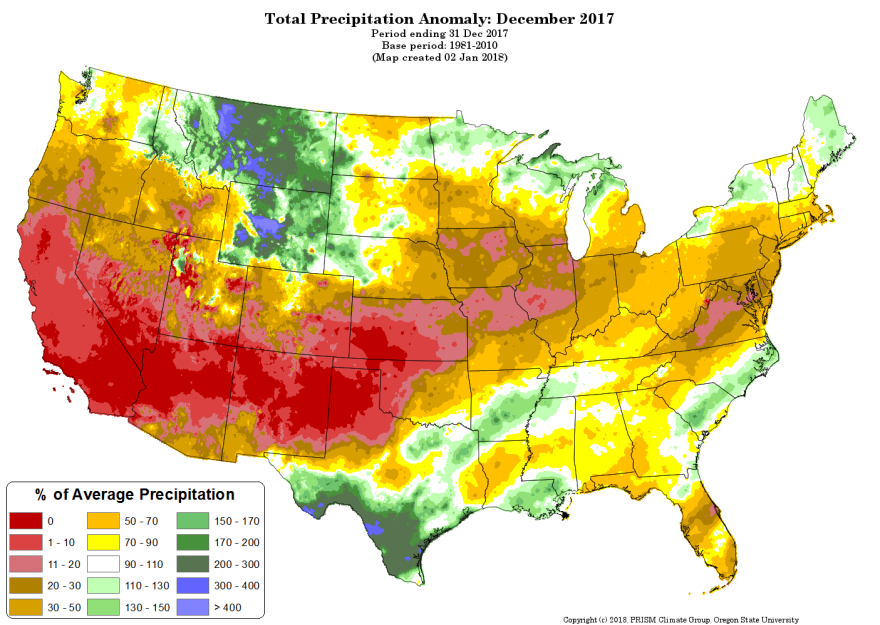The first official forecast for the amount of water expected in the Colorado River and its Rocky Mountain tributaries this spring is in, and the outlook is grim.
ŌĆ£Well, itŌĆÖs not looking really great at this point,ŌĆØ says Greg Smith, a senior hydrologist at the National Oceanic and Atmospheric AdministrationŌĆÖs Colorado Basin River Forecast Center in Salt Lake City, Utah.
Layers of snow in the Colorado, Wyoming and Utah mountains feed the Colorado River basin. Some regions are reporting the driest start to a winter ever recorded. All of the riverŌĆÖs upper basin streams empty into Lake Powell, a reservoir on the Utah-Arizona border. The lakeŌĆÖs inflow -- all water entering the reservoir -- is anticipated to be 55 percent of average during spring runoff.

is currently less than half of what it is in an average year.
ŌĆ£The forecasts have dropped off quite dramatically,ŌĆØ Smith says. ŌĆ£We have several areas where weŌĆÖre forecasting less than 50 percent of average.ŌĆØ
That means some major streams could have less than half their normal flow from April to July. Low snowpack and low soil moisture in ColoradoŌĆÖs Gunnison, Dolores and San Juan river basins are causing into the 30 to 60 percent of average range.
Portions of Colorado, Utah, Arizona and New Mexico are experiencing moderate to severe drought, according to . Almost is in some form of short-term and long-term drought.
Coming off a couple years of average to above average snowpack in the Rocky Mountains, many of the regionŌĆÖs reservoirs have the capacity to withstand a dry year. But Smith says some of the smaller reservoirsŌĆÖ managers are beginning to sweat the low snowpack.

ŌĆ£ThereŌĆÖs definitely concern, especially for those areas where theyŌĆÖre operating on a year to year basis,ŌĆØ he says.
A high pressure ridge -- nicknamed the ŌĆ£Ridiculously Resilient RidgeŌĆØ by -- off the west coast set the course for weather patterns across the Western U.S. last fall and early winter. Storms able to push through the ridge end up weak, resulting in measly precipitation.
All that has led to the diminished snowpack in the Upper Colorado basin, reaching record low levels for early January, according to Smith.
But itŌĆÖs early, and thereŌĆÖs a possibility some big storms could boost mountain snowpack, Smith says. Though at this point, it would take a few record-breaking storms to catch up on the current deficit.
There are bright spots in the latest forecast. The Upper Green River in Wyoming has above average to average snowpack so far. So do portions of the Colorado RiverŌĆÖs headwaters in Rocky Mountain National Park.
The Colorado River basin provides water to more than 40 million people in the southwestern U.S., and is used by some of the fastest-growing cities in the country. Its water also irrigates 1.8 million acres of farm and ranch land.
Forecasts for a dry year could to negotiations on a drought plan in the works for years among Lower Colorado River Basin water managers. That proposal would require states to cut back on their water use if Lake Mead -- the riverŌĆÖs largest reservoir -- drops to critical levels.
This story is part of a project covering the Colorado River, produced by KUNC and supported through a Walton Family Foundation grant. KUNC is solely responsible for .







